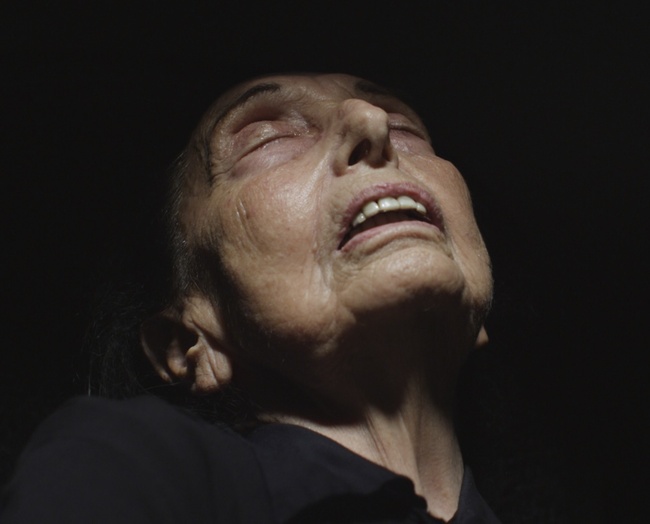This Storm is What We Call Progress
Ori Gersht
Imperial War Museum, London
25 January – April 2012
|
Opening in the week the UK marks Holocaust Memorial day, This Storm is What We Call Progress is a significant new exhibition of work by Ori Gersht, co-curated by Photoworks Head of Programme, Celia Davies. This exhibition, Gersht’s first major UK museum show, presents new photographs alongside two recent filmworks each reflecting personal experiences shaped by the Second World War.
|
|
Will You Dance For Me is a film depicting an 85-year-old dancer, Yehudit Arnon, rocking back and forth in a chair as she recalls her experiences as a young woman in Auschwitz. Her punishment for refusing to dance at an SS officer’s party was to stand barefoot in the snow, and she pledged that if she survived she would dedicate her life to dance. The film explores ideas about time, memory and movement. Towards the end of the piece, the elderly Yehudit begins to dance in her rocking chair; although her movement suggests she is suffering, Gersht’s film captures her spirit of defiance. This work was developed by Gersht in association with Photoworks.
|
|
The two-screen film Evaders explores the mountainous path of the Lister Route, used by many to escape Nazi-occupied France. The film references the ill-fated journey of Jewish writer and philosopher Walter Benjamin who fled Nazi persecution along this route, and whose own words give the exhibition its title. When Benjamin arrived at the Spanish border he found it closed and, distraught, he committed suicide. The border was re-opened the following day. Strongly referencing Benjamin’s texts, Gersht raises questions about history and progress. He uses the writer’s story and struggle with this dramatic environment as a means to explore ideas of transition and of physical, cultural and psychological borders.
|
|
Finally, Gersht’s photographic work Chasing Good Fortune results from the artist’s recent journey to Japan and examines the shifting symbolism of cherry blossoms. Initially linked to Buddhist concepts of renewal, the blossoms came to stand for Kamikaze soldiers during the Second World War. The photographs were taken at memorials to the Kamikaze, others at Hiroshima where the trees grow in nuclear contaminated soil. Many were taken with a digital camera at night and as a result of low light conditions, they often have a strange, fragmented quality, raising questions about the nature of their medium.
|
|
Ori Gersht says: “Scars created by wars on our collective and personal memories are at the essence of my practice. In my work I often explore the dialectics of destruction and creation, and the relationships between violence and aesthetics. Showing at IWM London felt like a unique opportunity to position my work in the context of this remarkable institution that reflects on wars, while attempting to draw a careful line between historic heritage and the horrific nature of violence.”
|
|
Kathleen Palmer, Head of Art at IWM London, says: “This is the first time that any of these works have been shown in the UK and since so much of Ori’s work deals with conflict, it’s fitting that his first major UK museum show should be here at IWM London. The films and photographs in This Storm Is What We Call Progress each pose powerful questions about memory and history which will stimulate contemplation and debate among our visitors.”
|

Discussion